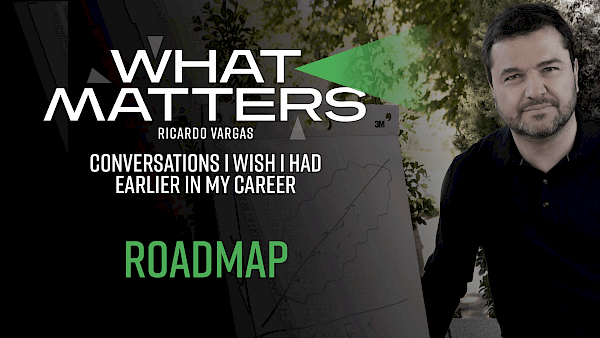Episode transcript The transcript is generated automatically by Podscribe, Sonix, Otter and other electronic transcription services.
Hello, everyone. Welcome to the 5 Minutes podcast. Today, I like to share with you episode three: Roadmap of What Matters series. This is the original audio of the series I'm doing about career. And this time, I talk about how do you build a roadmap. How do you identify the projects that you should undertake in the future to find your path towards your career? And sometimes, in this video, I'm saying, "put your name here, put the project there."

